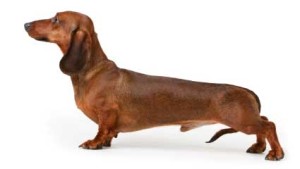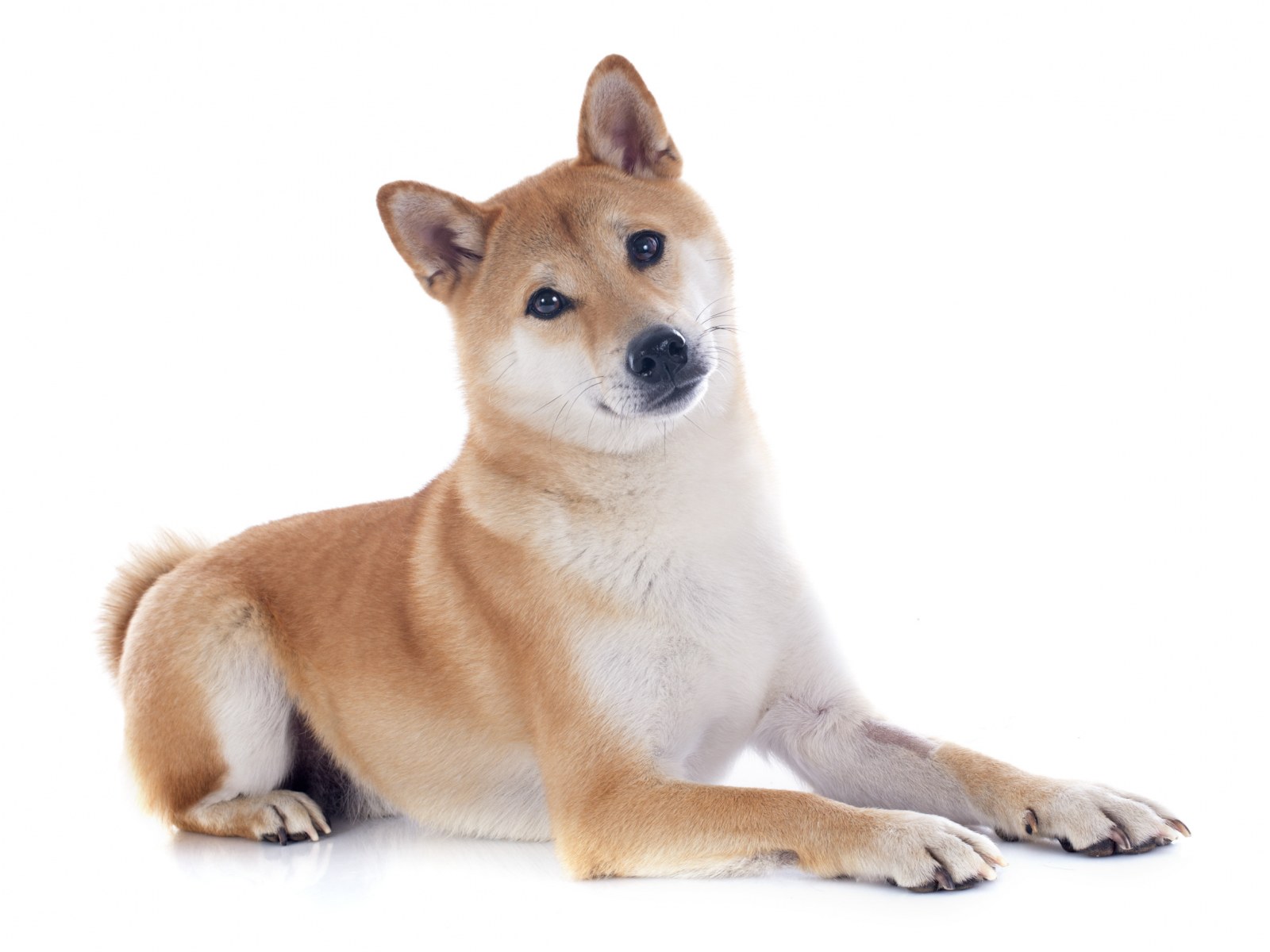Whether smooth, long, or wire, the Dachshund’s coat is his crowning glory, and a well-groomed Dachshund, with clean coat, short pleasure to caress, cuddle, and behold.
Smooth Coat Grooming
That short sleek coat is easy maintenance, but it still does its share of shedding. Shedding occurs year-round, but tends to go through a heavy phase in the spring and fall. You can hasten shedding by giving your Dachshund a warm bath during shedding season, which seems to help any already loose hairs come out.
Your best shedding tool is a soft rubber-bristle curry brush, which tends to pull dead hair out. Use it when the hair is still damp from bathing for maximal effect, but otherwise just spend a few minutes each day running it over him. You can also use a natural bristle brush or a horse-hair hound glove to burnish your Dachshund’s smooth coat to a sheen. Spray some mink-oil coat dressing on it for a nice smell and an even shinier coat. Otherwise, there’s just not much to do to it – except bathing.
Long Coat Grooming
Maintaining a long coat takes a little more effort than maintaining a short one, but it’s still not very hard. Use a pin brush or comb every few days to keep the tangles out. In winter or in dry climates, spritzing the coat with water or a coat dressing with just a tad of creme rinse in it will prevent static electricity in the coat, and keep it from becoming flyaway.
You’ll probably want to bathe a long coat slightly more often than you do a smooth, but the technique is the same. Oily or dirty hair tangles and mats more easily, which is one reason mats form in oilier areas of the coat, such as behind the ears. Friction areas, such as in the armpits, are also mat magnets.
Trimming
The Dachshund is supposed to be a natural, rather than sculpted breed, but if you really want a show-ring look, a tiny bit of trimming can help. Here’s how to achieve that look:
- Use small scissors to cut around the feet so they look round and clean-cut. Cut the hair beneath the foot to the level of the foot pads.
- Use thinning shears to remove any excess hair behind the front and rear legs. This hair should be profuse, but not so much that it sticks out to the sides – or trails in everything from your yard!
- Use a stripping comb to remove excessively thick hair from the sides of the neck, and along the top line from the back of the head to the tail, striving to create a smooth line.
- Use a stripping comb partway down the sides, gradually leaving the hair longer farther down the sides.
Wire Coat Grooming
The wire-coat actually takes a little more work than the other coat types, but it’s still not excessive. It requires brushing only once or twice a week, and bathing even less often than the other types. When bathing, use a shampoo formulated for coarse coats, and forgo the creme rinse.
It’s the plucking that takes time. Left to its own, the wire coat tends to grow without shedding, until it’s long, dry, and unruly. You can either hand pluck or use a stripping comb to remove the dead parts of the coat, giving your Dachshund a dapper look. You can also use a clipper, as long as you don’t intend to show him in conformation shows.
Clipping is easiest, but it ruins the texture and color of the coat, leaving it softer and less bright than it would be if plucked or stripped. If you use a #7 blade, it will leave the hair fairly long and keep the general desired look. Grooming shops will clip your Dachshund, but won’t pluck or strip him, as it takes too much time.
If you do want to pluck or strip your dog, the best place to learn is from your breeder. But here’s a quick-start guide.
To hand-pluck, just use your thumb and index finger to grasp very few hairs at a time, and give them a slight yank. If they’re ready to come out, they will. If not, they’ll stay. You can get a better grip on them if you dust the coat with grooming chalk first, or if the hair is dirty.
To use a stripping comb, hold the skin taut in the area you are grooming, hold a small amount of hair between the tool and your thumb, and quickly yank the comb straight backward in the direction of hair growth.
- Pluck or strip the hair so it’s fairly short over most of his body.
- Leave the hair fairly long on his muzzle and eyebrows. The beard should get gradually longer and fuller as it approaches the end of the muzzle. The brows, too, should get gradually shorter as they approach the outer corner of the eye. You can use scissors to taper the length.
- Pluck or strip it short from the lip corner to the outer corner of the eye and back from there.
- Strip it short on the top of the head, the ears, and down most of the throat and neck.
- The hair on the legs can be longer.
- Trim the feet as you do on the long coat.
How To Remove a Mat
- Try to pull it apart lengthwise, splitting it into two mats.
- Keep dividing them lengthwise.
- You can also use a mat-breaker or even a comb to comb at the edges of the mat. Remember: Comb the hair out of the mat, not the mat out of the hair!
- For added help, first spray or saturate the mat with a tangle remover.
- If the mat is huge, and trying to tease it out is just going to be too painful to the dog, only then should you consider cutting it out. To cut out a mat, first wriggle a comb between the mat and the skin. That way you can cut the hair beneath the mat without cutting the skin.

